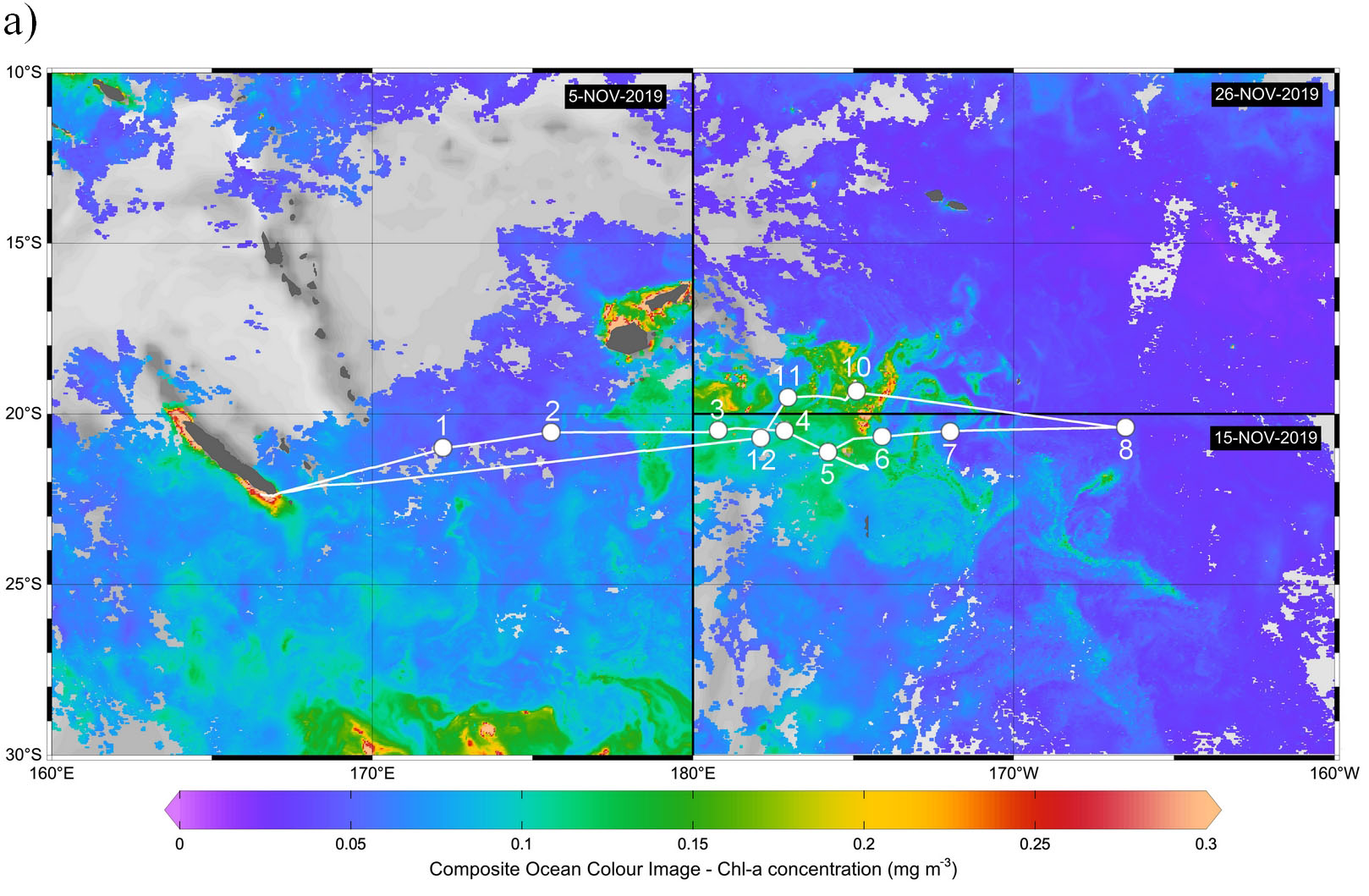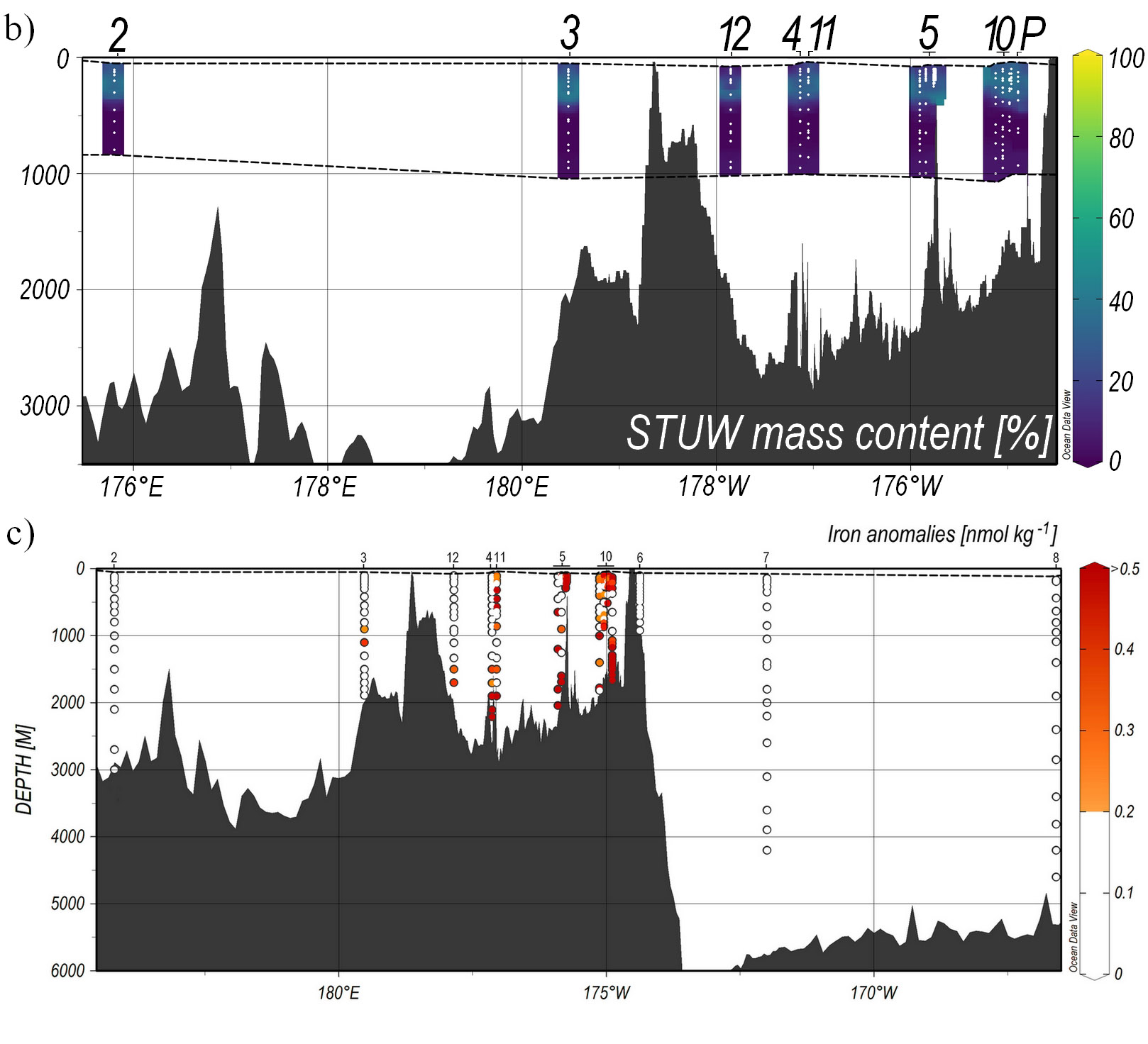The Tonga arc, an iron boundary in the South West Pacific Ocean
As part of the TONGA GEOTRACES process study (GPpr14), Tilliette and colleagues (2022, see reference below) established that the dissolved iron concentrations were very low in the South Pacific gyre (∼0.2 nmol kg−1) while they could reach 50 nmol kg−1 in the west of the Tonga arc. As established by an eOMPA statistical analysis, this iron fertilization of the Lau basin results from active shallow hydrothermal inputs from the Tonga arc geological structures. It explains the rich development of Trichodesmium and other dinitrogen fixing organisms, making this area a hot spot for nitrogen fixation. However, shallow hydrothermal plumes are not transported over long distances, contrasting with the extent of deep plumes. Specific surface biogeochemical conditions might lead to dissolved iron precipitation and depletion.


Reference :
Tilliette, C., Taillandier, V., Bouruet‐Aubertot, P., Grima, N., Maes, C., Montanes, M., Sarthou, G., Vorrath, M. ‐E., Arnone, V., Bressac, M., González‐Santana, D., Gazeau, F., & Guieu, C. (2022). Dissolved Iron Patterns Impacted by Shallow Hydrothermal Sources Along a Transect Through the Tonga‐Kermadec Arc. Global Biogeochemical Cycles, 36(7). Access the paper: 10.1029/2022gb007363
